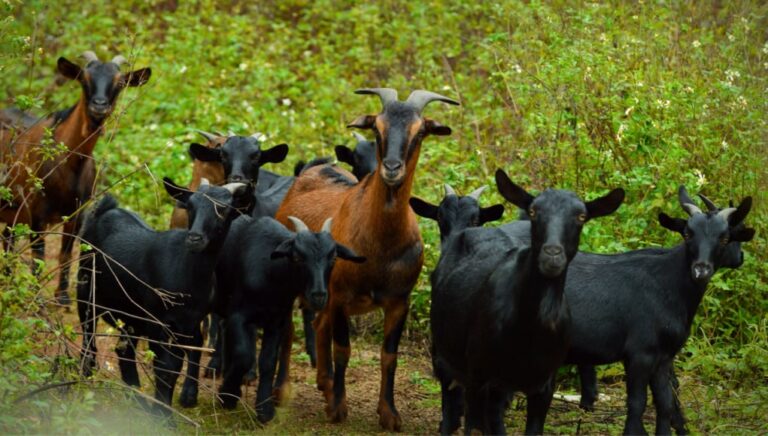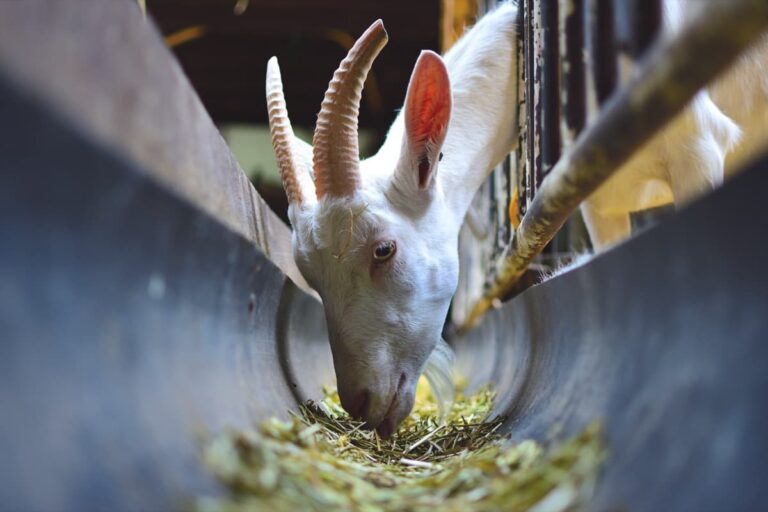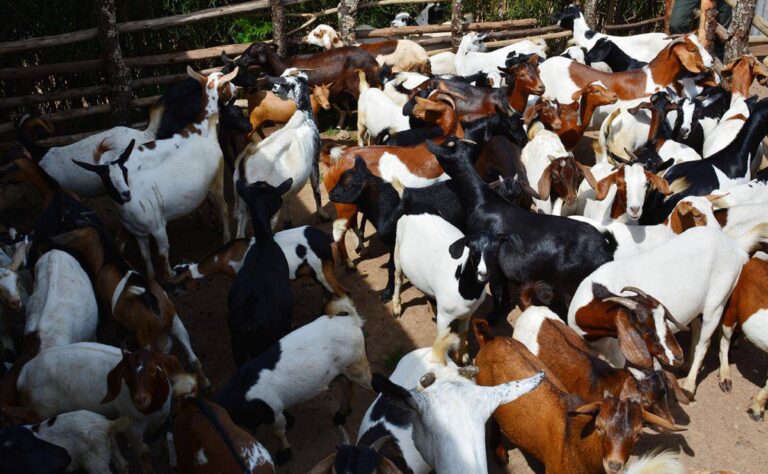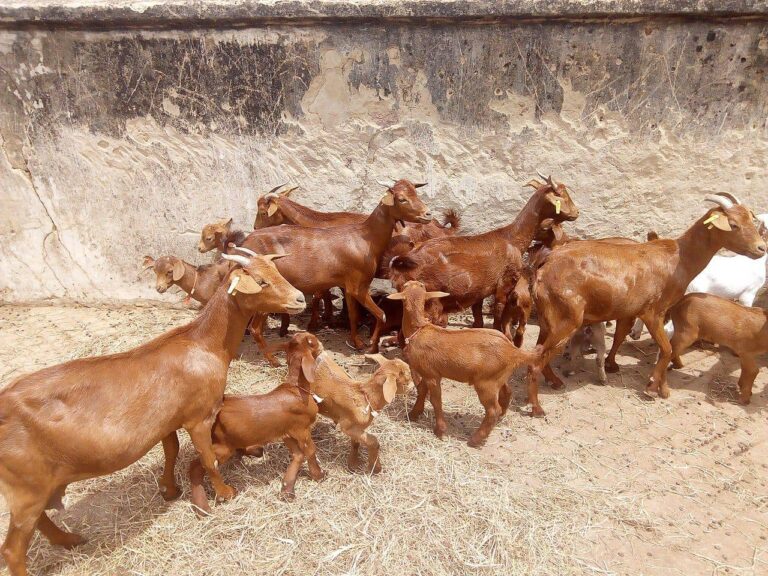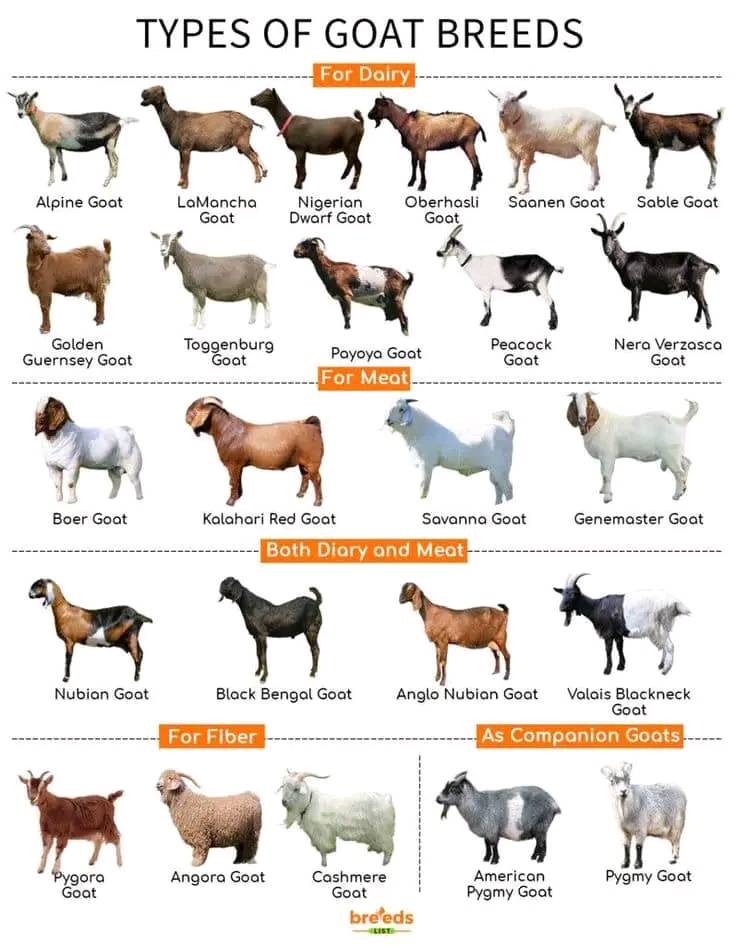Fattening goats for meat, also known as goat finishing, is a practical strategy for farmers who want to raise healthy animals with good muscle mass and market weight in a short time.
Whether you’re targeting festive seasons, local butchers, or commercial meat suppliers, efficient feeding during the fattening period can significantly increase your income.
But rushing into grain-heavy feeding or using trial-and-error diets can be counterproductive.
This guide breaks down the best feed strategies for fattening goats, balancing cost, weight gain, and animal health.
What Is Goat Fattening?
Goat fattening is the intentional feeding of young or mature goats to boost their body weight, muscle tone, and fat cover within a limited timeframe: usually 60 to 120 days. The goal is to reach a desirable slaughter weight or condition for market.
It involves a high-energy, high-protein feeding program paired with good health management, stress control, and strategic housing. While it’s often associated with commercial breeds like Boer or Kalahari Red, any healthy goat, whether crossbred or indigenous, can be fattened profitably if fed right.
Ideal Goats for Fattening
For best results, select goats that are:
- Between 5 and 12 months old
- Healthy, dewormed, and vaccinated
- Of meat-type or fast-growing breeds
- With good frame size but not too thin or too fat
Male goats (bucks or castrated wethers) tend to gain weight faster and convert feed more efficiently than females during the fattening phase.
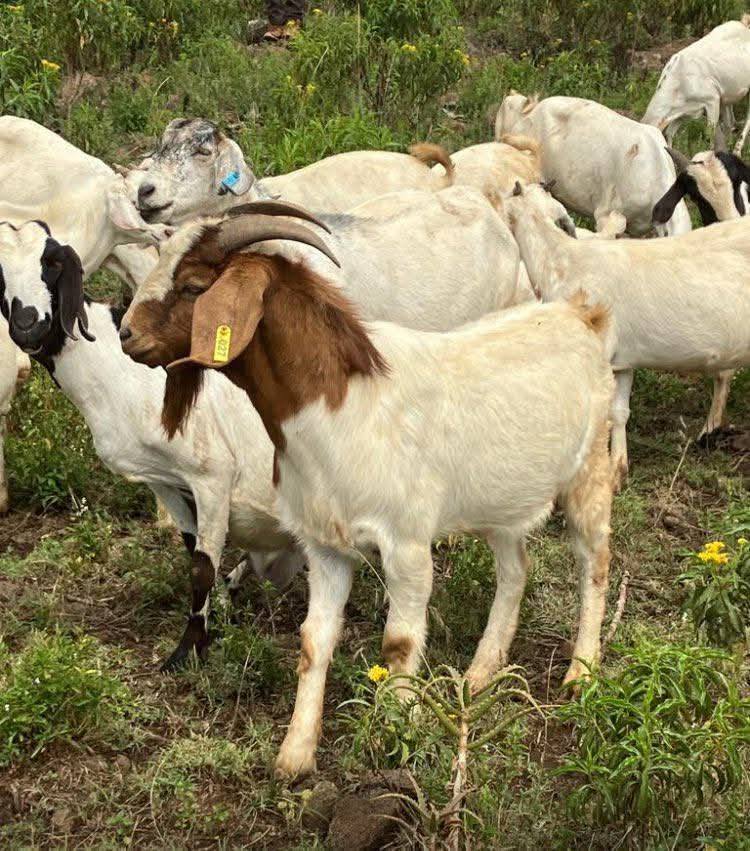
Key Feeding Principles for Fattening Goats
1. Energy-Rich Base
The foundation of a fattening diet is high-energy feed. Energy is needed for weight gain, fat deposition, and growth. Good sources include:
- Maize (corn)
- Sorghum or millet
- Cassava peels (sun-dried and ground)
- Molasses (for palatability and extra calories)
Grain makes up a large portion of the diet, but it must be paired with fibre to protect the rumen.
2. Moderate to High Protein
Protein builds muscle and supports digestion. A fattening ration should contain 12–16% crude protein, especially in the early stages. Good protein sources include:
- Groundnut cake or soybean meal
- Cottonseed cake or palm kernel cake
- Brewers’ grain (wet or dried)
- Legume hay (alfalfa, gliricidia, leucaena)
You can reduce protein slightly in the final 2–3 weeks when the focus shifts more toward fat finishing.
3. Consistent Fibre Supply
Goats need fibre to keep their rumen healthy. Lack of fibre leads to bloating and poor digestion. Add:
- Chopped hay (grass or legume mix)
- Rice or wheat bran
- Straw or dry leaves
Fibre also slows down digestion, helping goats extract more nutrients from energy-dense feed.
Sample Fattening Ration (Per Day, for a 20–30 kg Goat)
- Maize or cassava – 500 g
- Wheat or rice bran – 200 g
- Groundnut cake – 150 g
- Legume hay – ad libitum (at least 1–1.5 kg)
- Mineral premix – 20–30 g
- Salt – 10 g
- Clean water – unlimited access
Feeding Tips:
- Feed twice daily, morning and evening.
- Always provide hay first, then concentrate feed.
- Use a trough or raised feeder to prevent wastage.
- Introduce new feeds gradually over 7–10 days.
- Monitor for bloating, diarrhea, or reduced appetite.
Pasture vs. Stall Fattening: Which Works Best?
Stall-fed systems give full control over feed quantity and quality, reduce parasite exposure, and allow faster weight gain.
Pasture-based fattening is cheaper but offers slower results and variable nutrition. It works better with supplementation.
A hybrid system (also known as semi-intensive), where goats graze during the day and receive evening concentrates, balances cost with performance.
Managing Health During Fattening
Weight gain depends not just on feed but also on digestive health and disease control.
- Deworm goats before starting the programme to improve feed efficiency.
- Vaccinate against PPR, enterotoxemia, and pasteurellosis, depending on local risks.
- Provide clean, fresh water at all times.
- Keep housing well-ventilated, dry, and spacious to reduce stress and respiratory problems.
How Long Does Fattening Take?
Most goats respond well within 60 to 90 days, gaining between 0.15 to 0.3 kg per day depending on breed, feed quality, and starting weight. Monitor weight bi-weekly if possible to track progress.
When Is a Goat Ready for Market?
Signs your goat is ready for sale or slaughter include:
- Well-rounded, filled-out body
- Muscular thighs and neck
- Smooth coat and healthy skin
- Weight target achieved (typically 35–45 kg live weight for medium breeds)
Avoid overfattening, as excess fat reduces dressing percentage and lowers consumer preference in some markets.
Common Mistakes to Avoid
- Skipping fibre to speed up fattening; this leads to bloat and acidosis.
- Feeding moldy grains or unbalanced rations; this results in slow growth or illness.
- Neglecting deworming or vaccinations; this reduces feed conversion efficiency.
- Inconsistency in feeding times or portions; this causes stress and uneven weight gain.
Wrapping Up
Fattening goat is about strategic nutrition that converts feed into profit.
With a solid feeding plan, good-quality ingredients, and proactive health management, you can turn underweight goats into market-ready animals within weeks. The key lies in balancing energy, protein, and fibre while minimising stress and maximising feed efficiency.
Related:

